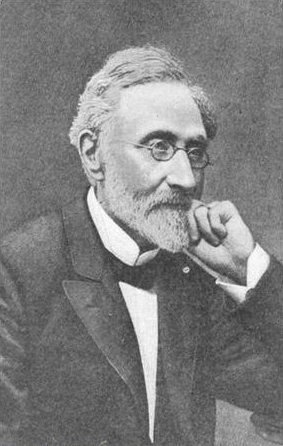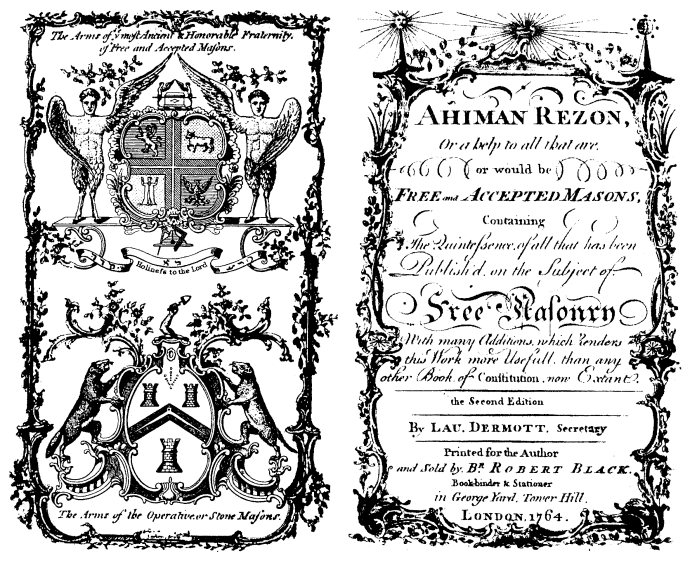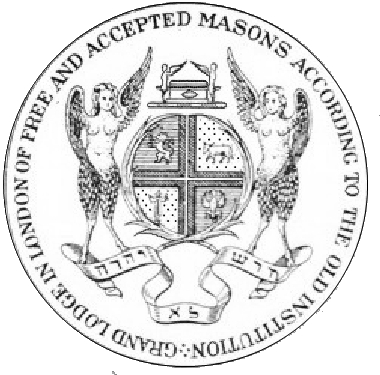|
Judah Leon Templo
Jacob Judah Leon Templo (1603 – after 1675) was a Jewish Dutch scholar, translator of the Psalms, and expert on heraldry, of Sephardic descent. Biography Jaco Judah Leon was the son of the Portuguese Jews Abraham de Leão and Felipa de Fonseca. He became a '' ḥakham'' in Middelburg, Zeeland and, after 1643, practiced in Amsterdam, where he was also a teacher in the Talmud Torah. He vocalized the entire ''Mishnah'', which was printed in 1646 at the establishment of Menasseh Ben Israel, with the anonymous collaboration of Adam Boreel. Jacob caused a great stir with a plan he drew of Solomon's Temple. It was exhibited before Charles II of England. The author published a concise, comprehensive Spanish description entitled ''Retrato del Templo de Selomoh'' (''Portrait of the Temple of Solomon'') in Middelburg in 1642. This was translated into Dutch in the same year, into French in 1643, and by himself into Hebrew in 1650, with the title ''Tavnith Hekhal''. Augustus II, Duke of Br ... [...More Info...] [...Related Items...] OR: [Wikipedia] [Google] [Baidu] |
Salom Italia
Salom Italia (also Salomo d'Italia) (ca. 1619, possibly Mantua - ca. 1655, possibly Amsterdam) was an Italian copper engraver who worked in Amsterdam. He became known particularly for his illustrations for the Book of Esther, which merged ideas about the Jewish diaspora with those of Dutch liberation after the Eighty Years' War. Biography Salom Italia was likely born ca. 1619 in Mantua, Lombardy, where his father Mordechai operated a printing house. Earlier suggestions, that he had been born in Castel Branco, were denied by Narkiss in 1957. Narkiss argues that he left Mantua after the Austrians invaded, and left for the Republic of Venice, and settled in Amsterdam at the latest in 1641, where he began work as an artist and where he likely worked until he died. He was one of only a few Jewish artists working in Amsterdam. Of the ten known works he signed, two are dated. Most of his copper engravings pertain to the Book of Esther. He is known also for his portraits of the rabbis ... [...More Info...] [...Related Items...] OR: [Wikipedia] [Google] [Baidu] |
Augustus II, Duke Of Brunswick
Augustus II (10 April 1579 – 17 September 1666), called the Younger (german: August der Jüngere), a member of the House of Welf was Duke of Brunswick-Lüneburg. In the estate division of the House of Welf of 1635, he received the Principality of Wolfenbüttel which he ruled until his death. Considered one of the most literate princes of his time, he is known for founding the Herzog August Library at his Wolfenbüttel residence, then the largest collection of books and manuscripts north of the Alps. Life Augustus was born at Dannenberg Castle, the seventh child of Duke Henry of Brunswick-Lüneburg (1533–1598). His father had ruled over the Brunswick Principality of Lüneburg, jointly with his younger brother William, since 1559. Ten years later, however, upon his marriage with Ursula, a daughter of the Ascanian duke Francis I of Saxe-Lauenburg, he had to waive all rights and claims and was compensated with the small Dannenberg lordship. Moreover, he received an an ... [...More Info...] [...Related Items...] OR: [Wikipedia] [Google] [Baidu] |
Meyer Kayserling
Meyer Kayserling (also '' Meir'' or ''Moritz'', 17 June 1829 – 21 April 1905) was a German rabbi and historian. Life Kayserling was born in Hanover, and was the brother of writer and educator Simon Kayserling. He was educated at Halberstadt, at Nikolsburg (Moravia) where he studied under Samson Raphael Hirsch, at Prague where he studied under S.J. Rapoport, at Würzburg where he studied under Seligman Baer Bamberger, and finally at the Humboldt University of Berlin. He devoted himself to history and philosophy. Encouraged in historical researches in Berlin by Leopold von Ranke, Kayserling turned his attention to the history and literature of the Jews of the Iberian Peninsula. In 1861 the government of Aargau appointed him rabbi of the two Swiss Jewish municipalities of Endingen and Lengnau in Surbtal, an office he held until 1870. During his residence in Switzerland he argued in favor of civil equality for his coreligionists, and also maintained contacts with high-ra ... [...More Info...] [...Related Items...] OR: [Wikipedia] [Google] [Baidu] |
Julius Fürst
Julius Fürst (; 12 May 1805, Żerków, South Prussia – 9 February 1873, Leipzig), born Joseph Alsari, was a Jewish German orientalist and the son of noted maggid, teacher, and Hebrew grammarian Jacob Alsari. Fürst was a distinguished scholar of Semitic languages and literature. During his years as professor in the department of oriental languages and literature at the University of Leipzig (1864–1873), he wrote many works on literary history and linguistics. Biography At an early age, Fürst had a remarkable knowledge of Hebrew literature, Old Testament scriptures and oriental languages. In 1825, after having studied at Berlin, where Hegel and Neander were among his teachers, he took a course in Jewish theology at Posen. In 1829, after having abandoned his Jewish orthodoxy, he went to Breslau, and in 1831 to Halle. Here he took his degree in oriental languages and theology under Gesenius in 1832.Jewish Encyclopedia Bibliography: *Delitzsch'Zur Gesch. der Jüdischen P ... [...More Info...] [...Related Items...] OR: [Wikipedia] [Google] [Baidu] |
Heinrich Grätz
Heinrich Graetz (; 31 October 1817 – 7 September 1891) was amongst the first historians to write a comprehensive history of the Jewish people from a Jewish perspective. Born Tzvi Hirsch Graetz to a butcher family in Xions (now Książ Wielkopolski), Grand Duchy of Posen, in Prussia (now in Poland), he attended Breslau University, but since Jews at that time were barred from receiving Ph.D.s there, he obtained his doctorate from the University of Jena.''Encyclopaedia Judaica'' (2007, 2nd ed.) entry on "Graetz, Heinrich," by Shmuel Ettinger and Marcus Pyka After 1845 he was principal of the school of the [...More Info...] [...Related Items...] OR: [Wikipedia] [Google] [Baidu] |
Giovanni Bernardo De Rossi
Giovanni Bernardo De Rossi (October 25, 1742 in Castelnuovo Nigra, Piedmont – March 23, 1831 in Parma) was an Italian Christian Hebraist. He studied in Ivrea and Turin. In October 1769, he was appointed professor of Oriental languages at the University of Parma, where he spent the rest of his life. His inaugural lecture on the causes of the neglect of Hebrew study was published in 1769 at Turin. Scholarly writings De Rossi devoted himself to three chief lines of investigation—-typographical, bibliographical, and text-critical. Influenced by the example of Benjamin Kennicott, he determined on the collection of the variant readings of the Old Testament, and for that purpose collected a large number of manuscripts and old editions. In order to determine their bibliographical position he undertook a critical study of the annals of Hebrew typography, beginning with a special preliminary disquisition in 1776, and dealing with the presses of Ferrara (Parma, 1780), Sabbionetta (Erlange ... [...More Info...] [...Related Items...] OR: [Wikipedia] [Google] [Baidu] |
Willem Surenhuis
Willem Surenhuis (also Surenhuys or Surenhusius, c.1664 in Rottum (Groningen), Rottum – 1729) was a Dutch Christians, Christian scholar of Hebrew language, Hebrew, known for his Latin translation of the ''Mishnah'', the first of the complete work. It was published from 1698 to 1703. The son of a German-born minister, he studied at the University of Groningen and later taught in Amsterdam.Peter van Rooden, ''The Amsterdam Translation of the Mishnah'', p. 257 in William Horbury (editor), ''Hebrew Study from Ezra to Ben-Yehuda'' (1999). Notes {{DEFAULTSORT:Surenhuis, Willem 1664 births 1729 deaths Dutch academics University of Groningen alumni Christian Hebraists People from Eemsmond ... [...More Info...] [...Related Items...] OR: [Wikipedia] [Google] [Baidu] |
Grand Lodge Of Ireland
The Grand Lodge of Ireland is the second most senior Grand Lodge of Freemasons in the world, and the oldest in continuous existence. Since no specific record of its foundation exists, 1725 is the year celebrated in Grand Lodge anniversaries, as the oldest reference to Grand Lodge of Ireland comes from the ''Dublin Weekly Journal'' of 26 June 1725. This describes a meeting of the Grand Lodge to install the new Grand Master, The 1st Earl of Rosse, on 24 June. The Grand Lodge has regular Masonic jurisdiction over 13 Provincial Grand Lodges covering all the Freemasons of the island of Ireland, and another 11 provinces worldwide. History There is considerable evidence of Masonic Lodges meeting in Ireland prior to the 18th century. The story of the "Lady Freemason", Elizabeth St. Leger, dates to a time prior to the existence of the Grand Lodge; also, there are references to Lodge meetings across Dublin in a speech given in Trinity College, Dublin, as far back as 1688. The oldest art ... [...More Info...] [...Related Items...] OR: [Wikipedia] [Google] [Baidu] |
United Grand Lodge Of England
The United Grand Lodge of England (UGLE) is the governing Masonic lodge for the majority of freemasons in England, Wales and the Commonwealth of Nations. Claiming descent from the Masonic grand lodge formed 24 June 1717 at the Goose & Gridiron Tavern in London, it is considered to be the oldest Masonic Grand Lodge in the world. Together with the Grand Lodge of Scotland, and the Grand Lodge of Ireland, they are often referred to by their members as "the home Grand Lodges" or "the Home Constitutions". History Moderns and Ancients in English Freemasonry Prior to 1717 there were Freemasons' lodges in England, Scotland, and Ireland, with the earliest known admission of non-operative masons being in Scotland. On St John's Day, 24 June 1717, three existing London lodges and a Westminster lodge held a joint dinner at the Goose and Gridiron alehouse in St Paul's Churchyard, elected Anthony Sayer to the chair as Grand Master, and called themselves the Grand Lodge of London and Westmin ... [...More Info...] [...Related Items...] OR: [Wikipedia] [Google] [Baidu] |
Ahiman Rezon
The ''Book of Constitutions of this Grand Lodge'' or ''Ahiman Rezon'' (אֲחִימָן רְזוֹן) was a constitution written by Laurence Dermott for the Ancient Grand Lodge of England which was formed in 1751. The formation of the Ancient Grand Lodge brought together lodges and Masons who, believing themselves to be part of an older, original Masonic tradition, had chosen not to ally themselves with the previously formed Moderns Grand Lodge of 1717. Title The title ''Ahiman Rezon'' has been often said to be of the Hebrew language and variously mean "to help a brother", "will of selected brethren", "The secrets of prepared brethren", "Royal Builders" and "Brother Secretary". Upon more inspection however the words Ahiman and Rezon are two Biblical figures. Ahiman was one of four Levite gatekeepers appointed by King David, the others being Shallum, Akkub, and Talmon who guarded the Holy of Holies. Rezon, a fallen prince, eventually came to lead a group of Marauders to seize S ... [...More Info...] [...Related Items...] OR: [Wikipedia] [Google] [Baidu] |
Laurence Dermott
Laurence Dermott (; 1720 – June 1791) was born in Ireland and became a Freemason in 1741. He held various offices before being installed as Worshipful Master of Lodge No. 26 in Dublin on 24 June 1746. He moved to London in 1748, possibly working as a journeyman painter, and possibly with a view to expanding his father's business. He would later work as a wine merchant, like his father. He was married to Elizabeth Dermott but his will does not list any children. He lived in Aldgate, Mile End and Stepney. He served as Grand Secretary of the Ancient Grand Lodge of England from 1752 to 1771. He wrote and published the ''Book of Constitutions of this Grand Lodge'' for the Ancient Grand Lodge of England, which he titled the Ahiman Rezon. Above all, it was Dermott's drive and tenacity that is credited with turning an association of six London lodges in 1751 into a viable and successful Grand Lodge, with lodges throughout England and the colonies. Early life Laurence Dermott was born ... [...More Info...] [...Related Items...] OR: [Wikipedia] [Google] [Baidu] |
Antient Grand Lodge Of England
The Ancient Grand Lodge of England, as it is known today, or ''The Grand Lodge of the Most Ancient and Honourable Fraternity of Free and Accepted Masons (according to the Old Constitutions granted by His Royal Highness Prince Edwin, at York, Anno Domini nine hundred and twenty six, and in the year of Masonry four thousand nine hundred and twenty six)'' as they described themselves on their warrants, was a rival Grand Lodge to the Premier Grand Lodge of England. It existed from 1751 until 1813 when the United Grand Lodge of England was created from the two Grand Lodges. They are now called the ''Antients'', in contrast to the ''Moderns'', the original Grand Lodge which its critics, notably Laurence Dermott, said had moved away from the ritual of Scotland, Ireland, and now the Antient Grand Lodge. This Grand Lodge was also informally called the ''Atholl Grand Lodge'' because the Third and Fourth Dukes of Atholl presided over it as Grand Masters for half of its 62-year existence. [...More Info...] [...Related Items...] OR: [Wikipedia] [Google] [Baidu] |






